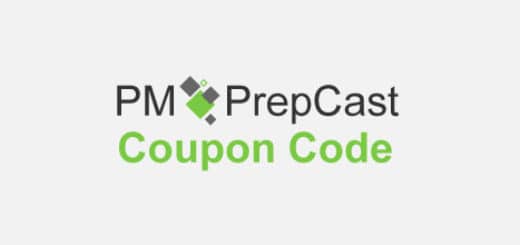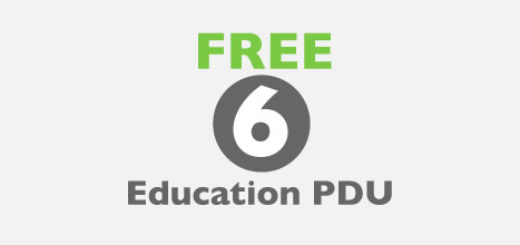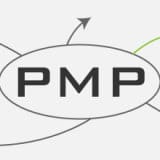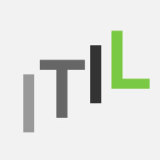PMI-ACP Study Notes: Agile Project Management vs PMBOK Guide

[PMI-ACP® exam study notes] Both the PMP Certification as well as the PMI-ACP® Certification are created and administrated by the Project Management Institute. This post addresses the relationship between what is written in the PMBOK® Guide (PMP exam) and Agile principles and practices (PMI-ACP® exam).
Article Highlights
Agile Project Management (PMI-ACP®)
There is no official reference guide for the PMI-ACP® Certification Exam. PMI only provides a list of eleven reference books with close to 4000 pages in total. In addition, the Agile Manifesto is an indispensable part of the exam syllabus.
Traditionally, project management is often seen as perfecting a project management plan and following the plan to completion. However in the fast moving world, and in particular the software development industry, adjusting to the changing environment is considered far more important than following the plan. And this gives rise to the proliferation of “Agile project management”.
Under Agile project management, the project is kicked off with “barely sufficient details” with the assumption that requirements will become clearer as the project moves on. The project will continuously evolves and adjusts to to reach success. Agile project management methodologies describe “how to do the things that should be done” rather than “what to be done”.
Agile project management is often carried out in an iterative fashion (called Agile sprints with relatively short duration). Agile methodologies start with developing a Product Vision, follows by development and prioritization of user stories, a series of sprint or iterative cycles, reviews and ends with Product Delivery.
Project Management – PMBOK® Guide (PMP)
Unlike the PMI-ACP® Certification Exam, the standard reference book for the PMP Certification Exam – the PMBOK® Guide (A Guide to the Project Management Body of Knowledge) – is published by the PMI. The most current edition of the PMBOK® Guide is the Fifth Edition. The PMP Exam is largely based on the PMBOK® Guide.
The PMBOK® Guide, on the other hand, describes a “plan-driven” approach about “what should be done during the management of a project”. It describes 47 processes of project management grouped within 10 Knowledge Areas and 5 process groups according to the project management lifecycle (more on the PMBOK® Guide processes, knowledge areas and process groups here).
The PMBOK® Guide represents a more traditional way of doing project management: from creating and perfecting a plan, carrying out the project according to the plan, making corrections for deviations, to closing the project by archiving what are learnt along the project development. Each process is described in details with the “ITTO” (inputs, tools & techniques, outputs) approach.
The project lifecycle described in the PMBOK® Guide begins with processes associated with Initiating the project, follows by processes for Planning, Executing and Monitoring & Controlling (often in a recursive manner), eventually ends with processes for Closing (end the project or phase).
Agile Project Management vs PMBOK® Guide
| Agile | PMBOK® Guide | |
|---|---|---|
| Essences |
|
|
| Project Nature | Iterative | Waterfall |
| Attitude to Changes | Embrace changes | Control changes Gold-plating is to be avoided |
| Customer Involvement | Collaborative – actively involved throughout the project | Authoritative – approving the plan and product |
| Project Requirements | Requirements are getting more detailed as the project evolves | Rather fixed from the beginning |
| Documentation | Barely sufficient | Detailed to track changes and deviation, need formal change approval |
| Project Success | Measured against final outcome | Measured against the plan |
| Advantages |
|
|
| Disadvantages |
|
|
| Ideal For | Projects with fast changing environments (e.g. software development) | Large projects with relatively fixed requirements (e.g. construction) |
Mike Griffiths has published a detailed comparison between Agile practices and PMBOK® Guide (though based on the 4th edition), a good read for those coming from the PMP background who would like to pursuit the PMI-ACP® exam.
Is Agile and PMBOK® Guide Project Management Compatible?
Yes, project management processes described in the PMBOK® Guide and Agile methodologies are compatible. Projects practicing Agile methodologies can make use of the processes described in the PMBOK® Guide because Agile is about the “how a project is to be carried out” and PMBOK® Guide is about “what should be done”. After all, it is up to the project manager to determine which principles and practices to apply in any given project – an emphasis of both the PMBOK® Guide as well as Agile project management.
Most Popular PMP Certification Exam Articles
- My Exam Prep Tips and Free Resources (I got 4P and 1 MP)
- How to Get 35 Contact Hours Fast and Easy?
- Detailed Comparision of online PMP Courses
- Over 1000+ FREE Quality Mock Exam / Practice Questions
- A FREE Guide to Formulas and Calculation (with explanation and sample questions)
- 47 Commonly Confused Terms with detailed explanation
Most Popular PMI-ACP Certification Articles
- Top 10 Tips to Prepare for the exam (I got all Proficient in my exam)
- How to Get 21 Contact Hours?
- Over 600+ FREE Quality Mock Exam / Practice Questions





 Hi, my name is Edward Chung, PMP, PMI-ACP®, ITIL® Foundation. Like most of us, I am a working professional pursuing career advancements through Certifications. As I am having a full-time job and a family with 3 kids, I need to pursue professional certifications in the most effective way (i.e. with the least amount of time). I share my exam tips here in the hope of helping fellow Certification aspirants!
Hi, my name is Edward Chung, PMP, PMI-ACP®, ITIL® Foundation. Like most of us, I am a working professional pursuing career advancements through Certifications. As I am having a full-time job and a family with 3 kids, I need to pursue professional certifications in the most effective way (i.e. with the least amount of time). I share my exam tips here in the hope of helping fellow Certification aspirants!





